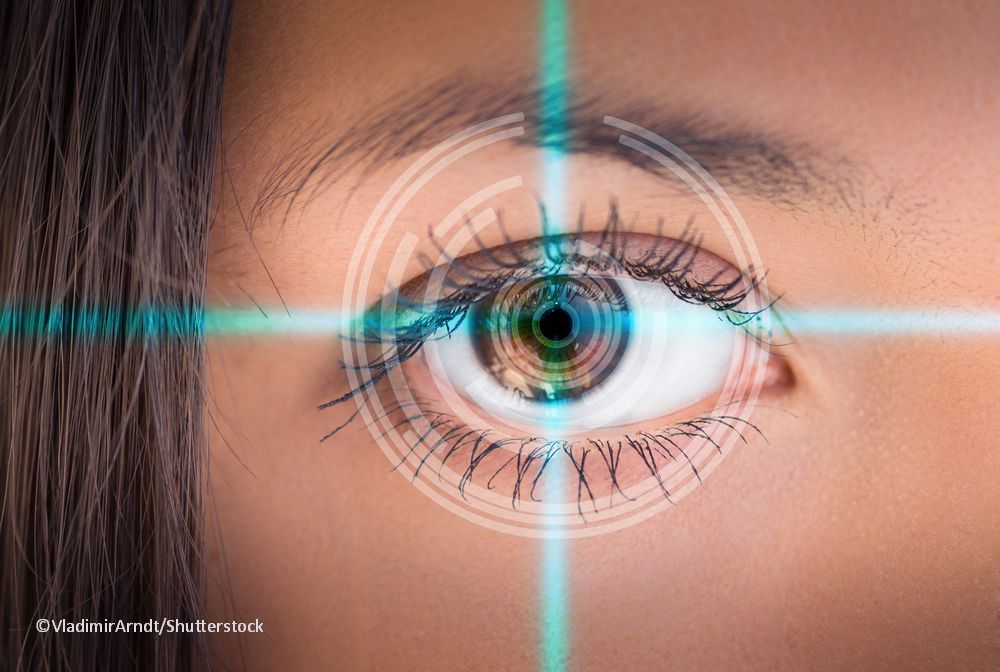Article
Odd Visual Symptoms During a Road Trip
Author(s):
A driver sees what appear to be squiggly lines in the right field of vision of her right eye.
Image ©Vladimir Arndt/Shutterstock.com

THE CASE
A 43-year-old woman is concerned about an episode that occurred 3 weeks earlier. While she was driving, she saw what appeared to be squiggly lines out of the right side of her right eye. Blinking had no effect on the symptoms.
She parked at a highway rest stop, looked in the mirror, and saw no changes in the appearance of her eyes, eyelids, or face. She looked to the right and the left, but the squiggly lines remained in the right field of vision of her right eye. She could not determine whether she could see out of that side of her eye during the episode.
While the symptoms were occurring, she felt that the pizza she had brought with her smelled rotten. She threw it out but did not have the appetite to purchase additional food. She mentions this because she had taken a few bites of the pizza about an hour before the episode and had not noticed anything wrong with the smell or taste at that time. The visual symptoms resolved after about an hour without any intervention, and she continued driving.
She also mentions that this incident occurred while she was driving to another city by herself. She was very stressed about the trip because she does not typically drive long distances, and she was going to her company headquarters to make a presentation to her managers, which she had never done before.
The symptoms have not recurred during the 3 weeks between the episode and her office visit.
Medical and family history
The patient is nearsighted and has high cholesterol. She has opted not to take medication for hypercholesterolemia because she wants to manage it with dietary modification. Her gallbladder was removed because of gallstones 11 years earlier; she has not had any other serious gastrointestinal problems.
She had a bout of headaches for several years when she took oral contraceptives; some of the headaches were severe enough to warrant urgent care visits. She has not had headaches in at least 5 years.
Her family history includes asthma, depression, and migraine.
Physical examination
This well-nourished patient is in no acute distress. She is cooperative and oriented and has a normal speech pattern. Her skin appears normal.
She does not have facial asymmetry, and her extraocular movements are full and symmetrical. Her pupils are equal, round, and reactive to light, and she does not have papilledema. Her visual acuity is improved when she wears her corrective lenses. She does not have a visual field cut.
Motor, sensory, and reflex examinations are normal in all four extremities, and coordination and gait are normal.
Pulses are normal, and results of abdominal, cardiac, and respiratory examinations are normal.
Diagnostic tests
The patient is sent for an ophthalmology consultation. The results of her eye examination are normal, without signs of glaucoma, retinal detachment, or vascular abnormalities.
Blood tests show unchanged elevated cholesterol levels.
Results of an electrocardiogram and a brain magnetic resonance angiogram (MRA) are normal.
What do you suspect caused her visual symptoms? >>
DIAGNOSIS: ISOLATED MIGRAINE AURA
This patient eventually received a diagnosis of isolated migraine aura without headache.
She did not have a headache during the event, and her symptoms were concerning, which prompted an evaluation for transient ischemic attack (TIA), glaucoma, and retinal detachment. Although the results of the physical examination and ophthalmology evaluation were normal, there was still some concern about a TIA because a cerebrovascular event could have resolved without any residual effects. Her symptoms were not typical of TIA, however, since she complained of squiggly lines in her field of vision, rather than vision loss, and the visual symptoms involved only one eye.
She had no cardiac risk factors or findings, and a brain MRA was normal. Her history of headaches and family history of migraine both supported the diagnosis of migraine aura. This patient’s sense of disgust about her food could have been a symptom of a migraine or of a migraine prodrome. The event was likely an atypical migraine and was probably triggered by stress.
She was not treated with blood thinners for stroke prevention. While TIA was essentially ruled out as a cause of her symptoms, she was instructed to follow up with her doctor for regular yearly evaluations and to seek medical attention if her symptoms recurred. Because the event did not recur, she was not treated with migraine prophylaxis or given a prescription for abortive migraine therapy.
Discussion
Migraine aura is uncommon but not rare. It is characterized by neurological symptoms, may precede or accompany a migraine, and may affect persons who have frequent migraines as well as those who experience migraines infrequently. In rare instances, a migraine aura can occur in the absence of other migraine symptoms.1
Studies suggest that spreading depression in the cerebral cortex occurs in association with migraine aura, and that the varying symptoms may be associated with correlating cerebral dysfunction. For example, a small study identified reduced blood oxygenation level–dependent functional magnetic resonance imaging signal response in patients who had vision loss during aura, but increased response in those who had positive visual symptoms, such as described in this case.2
Take-home points
• Migraine aura is a diagnosis of exclusion
• A person who has infrequent migraines can experience a migraine aura
• Exaggerated olfactory sensation or aversion to olfactory stimuli can be a symptom of a migraine during the prodromal, aura, or migraine phase
References:
1. Shah DR, Dilwali S, Friedman DI. Current aura without headache. Curr Pain Headache Rep. 2018;22:77. doi: 10.1007/s11916-018-0725-1.
2. Arngrim N, Hougaard A, Ahmadi K, et al. Heterogenous migraine aura symptoms correlate with visual cortex functional magnetic resonance imaging responses. Ann Neurol. 2017;82:925-939. doi: 10.1002/ana.25096.




